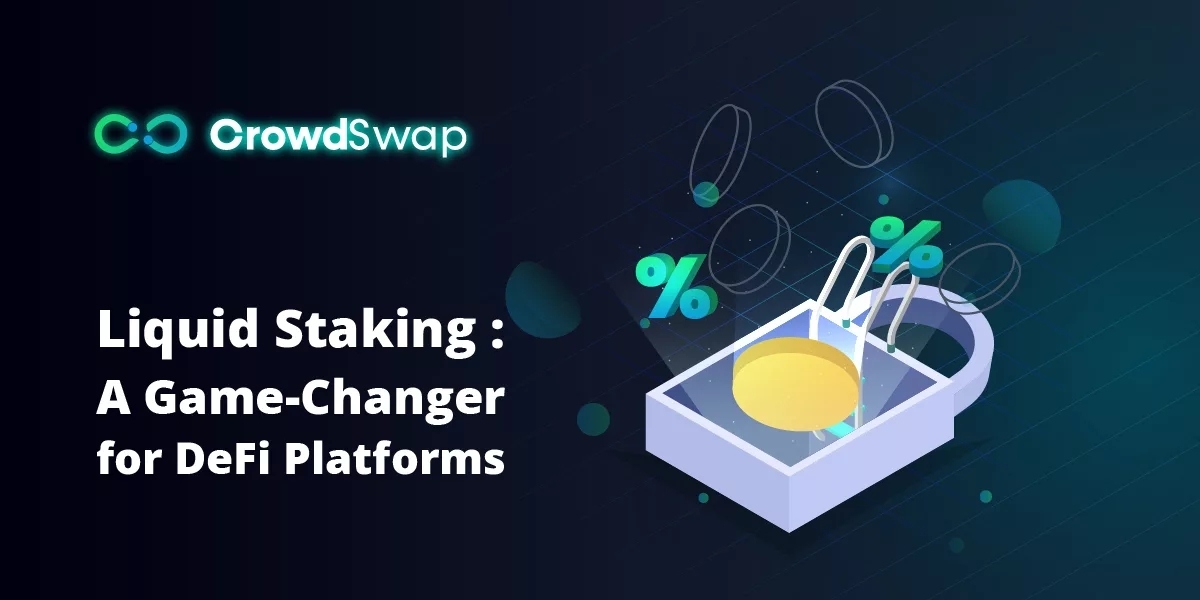Liquid staking has emerged as a powerful solution for stakers looking to enhance liquidity and capital efficiency in the world of blockchain staking. By allowing users to stake their assets and still maintain access to their funds, this method has revolutionized the staking landscape. In this article, we will explore the concept of liquid staking, its advantages, and the top platforms that offer it in the market.
Understanding Liquid Staking
Liquid staking, also known as soft staking, is a more advanced form of traditional staking that enables users to stake their tokens while maintaining control and access to their funds. In traditional staking, once tokens are locked up for a specific period, they become illiquid and cannot be transacted or used as collateral. This lock-up period can be a significant drawback, especially in volatile market conditions. To learn more about staking, read our article “What is staking crypto“.
Liquid staking addresses this issue by allowing stakers to receive derivatives in return for their staked assets. These derivatives represent the staker’s ownership in the underlying stake pool and its yield. By providing these derivatives, liquid staking platforms enable stakers to utilize their staked assets within the ecosystem for various purposes, such as trading, lending, and collateral.
Advantages of Liquid Staking
Liquid staking offers several advantages that make it an attractive option for stakers. The primary advantage is the ability to maintain liquidity while earning staking rewards. Unlike traditional staking, which locks up assets, liquid staking allows stakers to have their cake and eat it too. They can continue to participate in the blockchain ecosystem and take advantage of other opportunities without sacrificing the potential rewards from staking.
Another advantage is enhanced capital efficiency. By tokenizing the staked assets, stakers can use these liquid staking derivatives in DeFi protocols, lending pools, and decentralized exchanges. This opens up a wide range of possibilities for stakers to maximize the utility of their assets and potentially earn additional yield on top of the staking rewards.
Liquid staking also reduces the opportunity cost of locking up assets for staking purposes. Stakers no longer have to choose between staking their assets and utilizing them in other ways. They can now have the best of both worlds, maintaining liquidity and earning rewards simultaneously.
Top Liquid Staking Platforms
Several liquid staking platforms have emerged in the market, offering stakers diverse opportunities to participate. Let’s take a closer look at two of the leading platforms:
Lido
Lido is a popular liquid staking solution for Ethereum. It allows users to stake any amount of Ethereum, regardless of the minimum requirement for individual validators. By depositing Ethereum into Lido, users receive liquid staking tokens (LSTs) in return, such as stETH. These tokens represent the staker’s ownership in the Ethereum stake pool and can be traded, stored, and utilized in various DeFi protocols. Lido provides a seamless and user-friendly experience for stakers looking to benefit from liquid staking.
Marinade
Marinade is another prominent liquid staking platform that offers stakers the opportunity to stake their assets and earn rewards while maintaining liquidity. With Marinade, users can stake their tokens and receive derivatives in return, such as mETH. These derivatives can be used in DeFi protocols, lending pools, and other applications within the ecosystem. Marinade aims to provide a secure and efficient liquid staking experience for users.
Risks and Considerations
While liquid staking offers significant benefits, it’s essential for stakers to be aware of the potential risks and considerations associated with this approach. One of the primary risks is the potential for slashing. Slashing occurs when a validator behaves maliciously or unreliably, leading to a penalty in the form of a reduction in the staked assets. Stakers should carefully choose reputable platforms that have robust security measures in place to mitigate the risk of slashing.
Another consideration is the potential for market volatility. LSTs may not always trade at the same price as the underlying staked assets. During periods of liquidity crunches or unexpected events, the price of LSTs can drop below the value of the underlying assets. Stakers should be mindful of these potential price discrepancies and assess their risk tolerance accordingly.
Additionally, stakers should evaluate the liquidity and trading volume of the LSTs they receive. Higher liquidity and trading volume provide more flexibility for stakers to enter and exit positions, ensuring a smooth experience in utilizing these tokens within the ecosystem.
Trade Effortlessly
Ready to dive deeper? Our crypto exchange is simple and user-friendly, making trading a breeze
Conclusion: Unlocking Liquidity and Capital Efficiency in Staking
Liquid staking has opened up new possibilities for stakers in the blockchain ecosystem. By enabling stakers to stake their assets while maintaining liquidity and capital efficiency, liquid staking has revolutionized the staking landscape. Platforms like Lido and Marinade are leading the way in providing seamless and secure experiences for users.
While liquid staking offers numerous advantages, stakers should also be mindful of the potential risks and considerations associated with this approach. By carefully evaluating the platform, understanding the risks, and considering market conditions, stakers can make informed decisions to unlock liquidity and enhance capital efficiency. Overall, liquid staking presents an exciting opportunity for stakers to maximize the utility of their assets and participate in the blockchain ecosystem with increased flexibility and potential rewards.
FAQ:
What is an example of a liquid staking?
Imagine staking 1 MATIC on a platform. You get liquid staking tokens in return. While earning rewards, you can employ these LSTs on other platforms for extra gains.
Is liquid staking risky?
The risks of liquid staking are the same as traditional staking. Risks like scam and smart contract bugs are common between these two. But because stakers have access to their funds in liquid staking, it can be less risky during volatile market conditions and you can act fast.
What are the drawbacks of liquid staking?
The main concern is the potential for derivatives to lose their peg to the original tokens due to the lack of automatic algorithmic adjustments.













